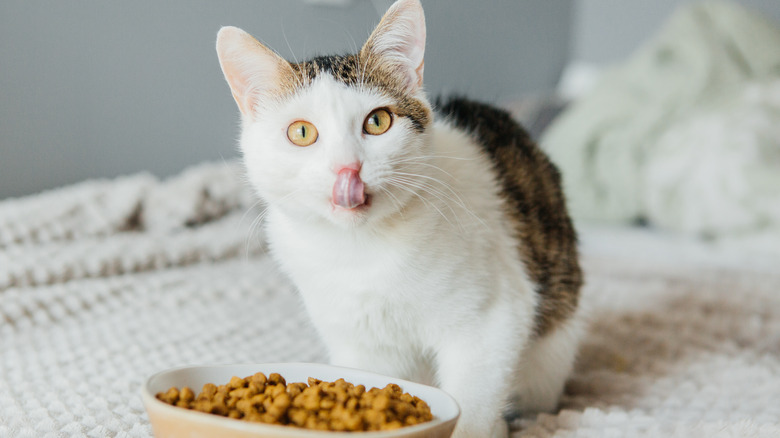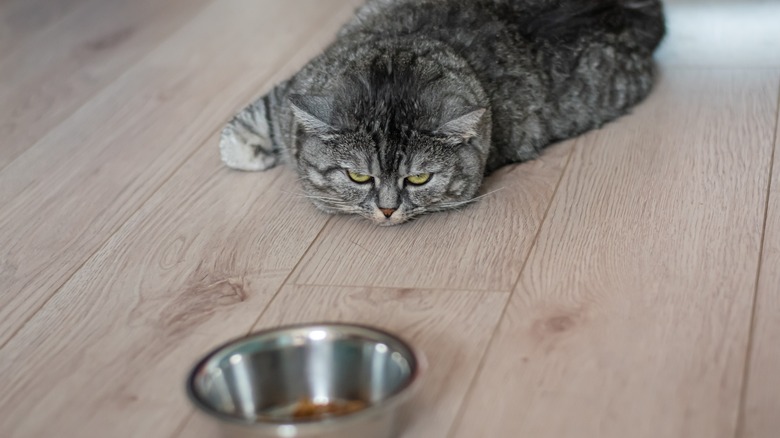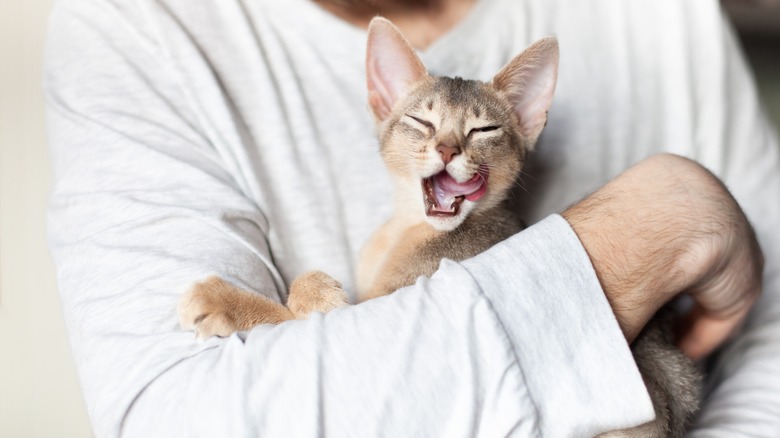Here's How To Treat Food Allergies In Your Cat
If your cat seems under the weather, it could be dealing with an allergy, which is one of the most common medical conditions to affect felines. Per VCA Animal Hospitals, cats can experience four major types of allergies — insect allergies, inhalant allergies, contact allergies, and food allergies. The latter occurs when a cat has an immune reaction to a specific ingredient, which causes its body to respond as though the ingredient is a harmful invader.
In actual fact, food allergies are rare in cats, with only 1% of all cats experiencing them (via PetMD). However, 15% of cats who experience itching end up being diagnosed with a food allergy, and 42% of cats with itching and gastrointestinal problems experience those symptoms as a result of food allergies.
Food allergies can cause great discomfort to a cat, so if you suspect that your cat is allergic to its food, it's definitely worth exploring further. Allergies are not curable, but they are manageable. The best treatment plan begins with a proper diagnosis.
Signs and symptoms of a food allergy
The first step in diagnosing a food allergy in your cat is looking out for the classic symptoms. Purina explains that the most common symptoms of food allergies in cats are skin problems, such as irritation and itchiness — which also happen to be common signs of food allergies in humans. Cats with food allergies also experience frequent ear infections and fur balls. In rare cases, a food allergy can lead to respiratory issues, and sometimes vomiting and diarrhea.
When you notice any of these symptoms, take your cat to the vet to begin testing for food allergies. Pet food brand Hill's recommends consulting a professional rather than trying to find the source of the allergies yourself. Changing your cat's diet can actually make it harder for the vet to get to the bottom of the issue. Because, while rare, food allergies in cats can be triggered by any substance at all. The most common is chicken, but beef, turkey, and other meats — such as duck — can also cause issues for your cat (via Great Pet Care). Other allergens to watch out for are soy, milk, and eggs.
How to treat food allergies in cats
A vet will test for food allergies in your cat by putting them on a carefully planned elimination diet. According to Cornell University College of Veterinary Medicine, diagnosis often requires "repeated systematic testing," as there may be multiple allergens affecting your cat. Cats are typically put on a "novel diet" where they are only fed protein from sources that they haven't been exposed to before. This usually lasts for around 10 weeks, during which time the symptoms should disappear. Foods from the cat's old diet are gradually reintroduced to pinpoint which ingredients cause flare-ups.
As there is no cure for food allergies, you can only treat this issue by ensuring that your cat does not eat what it's allergic to. Once you have the results from the testing, you can work with your vet to come up with an eating plan for your cat that doesn't contain any allergens. Vet charity PDSA points out that absolutely no other food should be given to your cat, once a safe eating plan has been decided. Ensure that the cat can't access human food around the house, and be aware that even cat treats can contain traces of ingredients that may be harmful.
Though the process of diagnosing and managing a feline food allergy can be stressful, it's worth it to improve your cat's quality of life.


